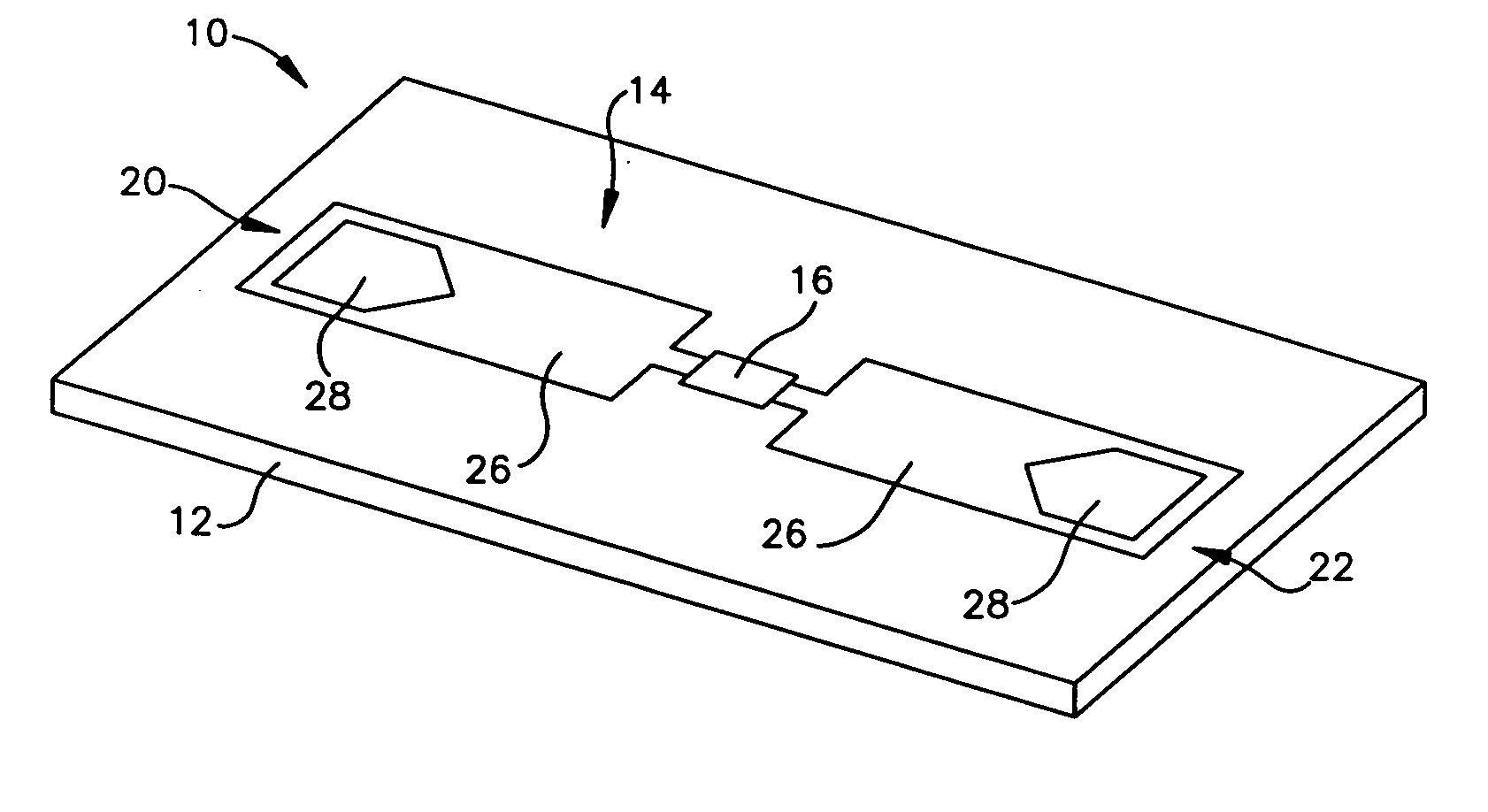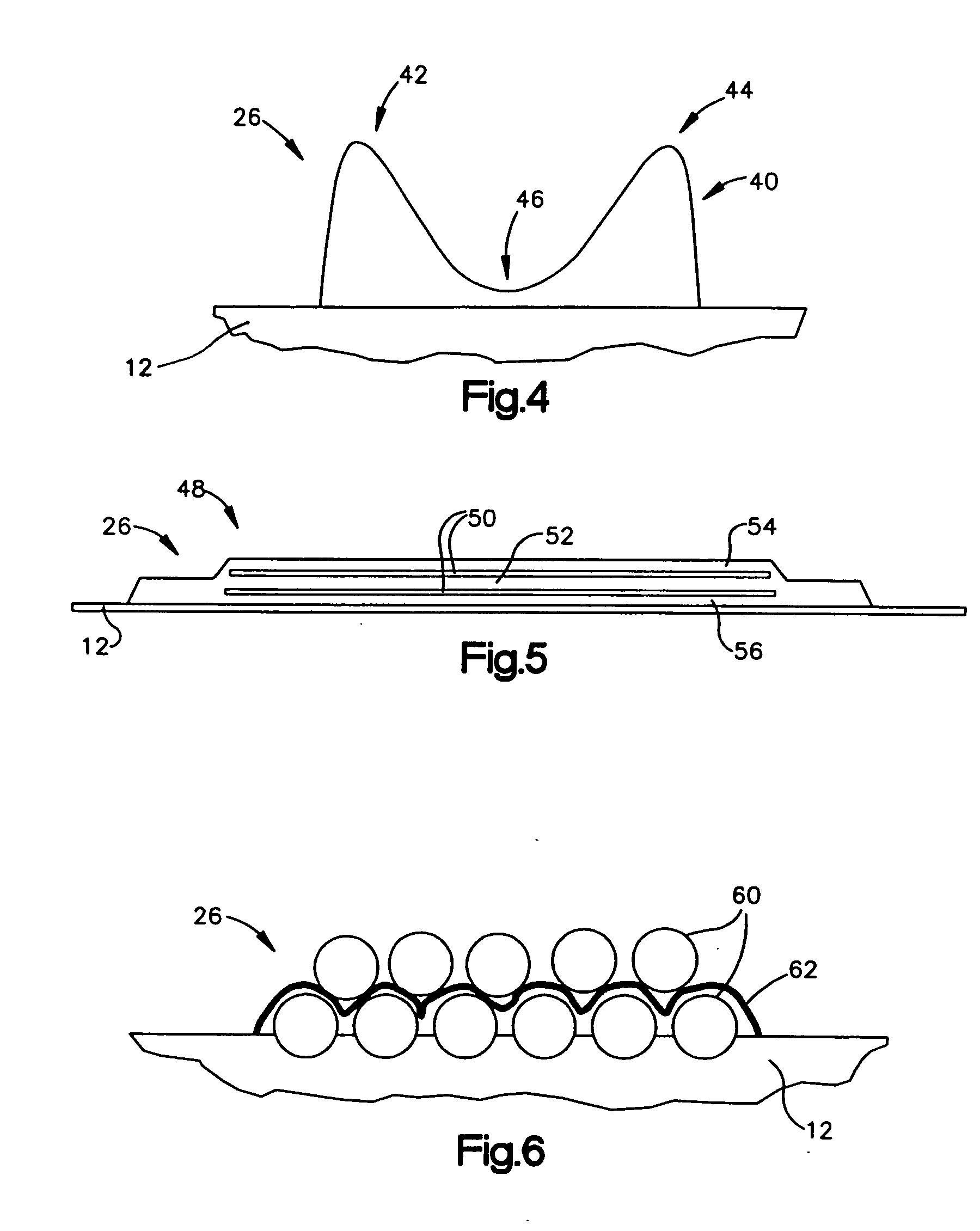RFID device with patterned antenna, and method of making
a technology of patterned antennas and antennas, applied in the field of radio frequency identification (rfid) tags and labels, can solve the problems of significant cost barriers to more widespread use of such devices, one component of cost is the cost of materials for the antenna structure, etc., and achieve the effect of reducing the cost of rfid devices and reducing the cos
- Summary
- Abstract
- Description
- Claims
- Application Information
AI Technical Summary
Benefits of technology
Problems solved by technology
Method used
Image
Examples
Embodiment Construction
[0039] A radio frequency identification device (RFID) antenna structure includes electrically-conductive material. The antenna structure includes low effective resistance areas and high effective resistance areas. The high effective resistance areas are located in regions where there would be little current flow even if there were less effective resistance, such as the same resistance as the low effective resistance areas. The high effective resistance areas may be spaces within the antenna structure in which there is substantially no electrically conductive material. Alternatively, the high effective resistance areas may have some non-zero electrical conductivity, while still having a higher effective resistance than the low effective resistance areas. Conductive material for the antenna structure may include conductive ink. By reducing or eliminating the amount of conductive material in the high effective resistance areas, and / or by substituting less expensive conductive material,...
PUM
| Property | Measurement | Unit |
|---|---|---|
| current-flow | aaaaa | aaaaa |
| effective resistance | aaaaa | aaaaa |
| conductivity | aaaaa | aaaaa |
Abstract
Description
Claims
Application Information
 Login to View More
Login to View More - R&D
- Intellectual Property
- Life Sciences
- Materials
- Tech Scout
- Unparalleled Data Quality
- Higher Quality Content
- 60% Fewer Hallucinations
Browse by: Latest US Patents, China's latest patents, Technical Efficacy Thesaurus, Application Domain, Technology Topic, Popular Technical Reports.
© 2025 PatSnap. All rights reserved.Legal|Privacy policy|Modern Slavery Act Transparency Statement|Sitemap|About US| Contact US: help@patsnap.com



